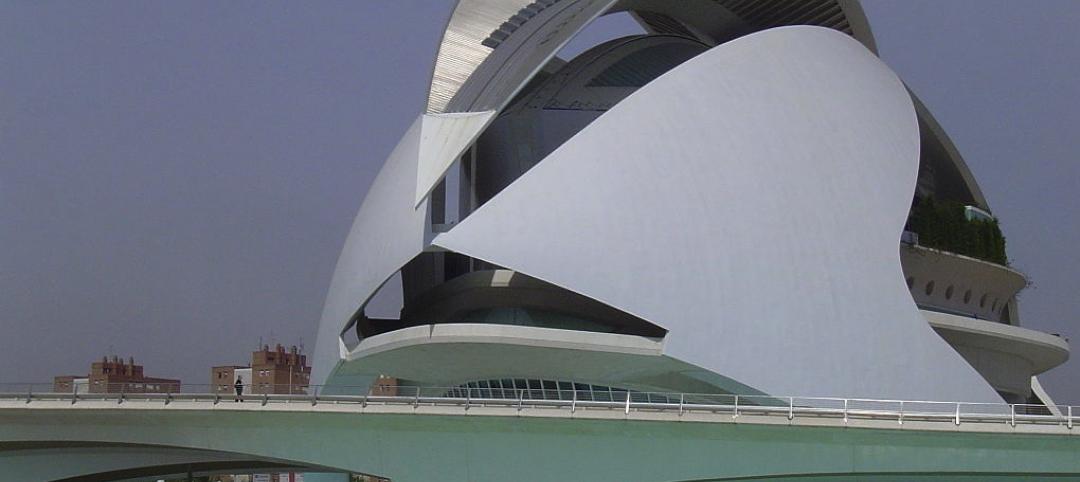 |
|
When rebuilding the observation tower, existing brick was taken down to a constant course, which allowed new brick to blend at the match line. |
For 38 years, the Pere Marquette Depot sat boarded up, broken down, and fire damaged. The Prairie-style building, with its distinctive orange iron-brick walls, was once the elegant Bay City, Mich., train station. The facility, which opened in 1904, served the Flint and Pere Marquette Railroad Company when the area was the epicenter of lumber processing for the shipbuilding and kit homebuilding industries.
In 1953, the 9,300-sf depot underwent an atomic-age modernization to convert it into a Greyhound bus terminal. Classical features like the 66-foot-high observation tower, wraparound canopy, ornamental metal brackets, and porte-cochere were demolished. After the bus station closed in 1969, the property sat vacant for more than three decades.
It took the depot's owner, Great Lakes Center Foundation, from 2002 to 2005 to patch together $3.85 million from local, state, and national sources to begin an extensive but frugal renovation that would bring the building back to life as a community center run by the local Convention and Visitor's Bureau and as offices for the Bay Area Community Foundation.
The Building Team, headed by Quinn Evans | Architects of Ann Arbor, Mich., with local firms Gregory Construction as GC and MacMillan Associates Inc. as engineer, had a mess on its hands. The masonry walls were in decent shape, but the foundation was undermined and the interior was devastated by toxic pigeon guano and fire and water damage, which destroyed most of the ornamental plaster walls and ceilings. The mechanical equipment, boiler, piping, plumbing fixtures, light fixtures, and most of the wiring had been stripped.
The Building Team salvaged the wainscoting and most of the windows and doors, replaced missing tiled canopies, the Spanish clay tile roof, and the observation tower, and repositioned the depot for use as a twenty-first-century community and office building. Although the project did not seek LEED certification, recycled content, low-VOC materials, low-flow plumbing fixtures, radiant heating, and light-sensor controls were used.
“They've done a wonderful job with both the interior and exterior work,” said Reconstruction Awards judge David Callan, SVP Environmental Systems Design, Chicago. Fellow judge Ken Osmun, group president of construction at Wight & Co., Darien, Ill., marveled at the project's bang for the buck. “The budget was so low and they had to make the depot the focal point of the community. I can't imagine the challenges they had to overcome.” —Jay W. Schneider, Senior Editor

Related Stories
| May 30, 2014
Riding high: L.A., Chicago working on their version of the High Line elevated park
Cities around the U.S. are taking notice of New York's highly popular High Line elevated park system. Both Chicago and Los Angeles are currently working on High Line-like projects.
| May 29, 2014
7 cost-effective ways to make U.S. infrastructure more resilient
Moving critical elements to higher ground and designing for longer lifespans are just some of the ways cities and governments can make infrastructure more resilient to natural disasters and climate change, writes Richard Cavallaro, President of Skanska USA Civil.
| May 23, 2014
Big design, small package: AIA Chicago names 2014 Small Project Awards winners
Winning projects include an events center for Mies van der Rohe's landmark Farnsworth House and a new boathouse along the Chicago river.
| May 23, 2014
Top interior design trends: Gensler, HOK, FXFOWLE, Mancini Duffy weigh in
Tech-friendly furniture, “live walls,” sit-stand desks, and circadian lighting are among the emerging trends identified by leading interior designers.
| May 22, 2014
No time for a trip to Dubai? Team BlackSheep's drone flyover gives a bird's eye view [video]
Team BlackSheep—devotees of filmmaking with drones—has posted a fun video that takes viewers high over the city for spectacular vistas of a modern architectural showcase.
| May 22, 2014
IKEA to convert original store into company museum
Due to open next year, the museum is expected to attract 200,000 people annually to rural Älmhult, Sweden, home of the first ever IKEA store.
| May 21, 2014
Gehry unveils plan for renovation, expansion of Philadelphia Museum of Art [slideshow]
Gehry's final design reorganizes and expands the building, adding more than 169,000 sf of space, much of it below the iconic structure.
| May 20, 2014
Kinetic Architecture: New book explores innovations in active façades
The book, co-authored by Arup's Russell Fortmeyer, illustrates the various ways architects, consultants, and engineers approach energy and comfort by manipulating air, water, and light through the layers of passive and active building envelope systems.
| May 19, 2014
What can architects learn from nature’s 3.8 billion years of experience?
In a new report, HOK and Biomimicry 3.8 partnered to study how lessons from the temperate broadleaf forest biome, which houses many of the world’s largest population centers, can inform the design of the built environment.
| May 19, 2014
Calatrava wins court case concerning 'Calatrava bleeds you dry' website
A judge has ordered the left-wing political party Esquerra Unida to pay €30,000 to Santiago Calatrava because of "insulting and degrading" website.















